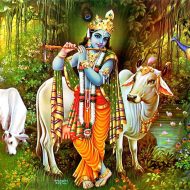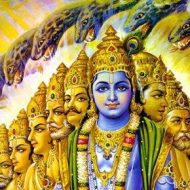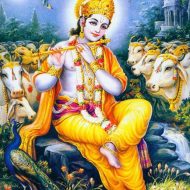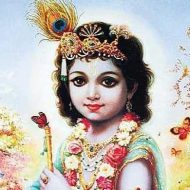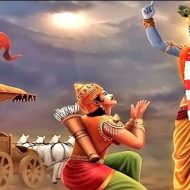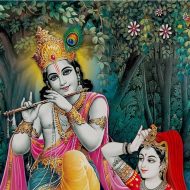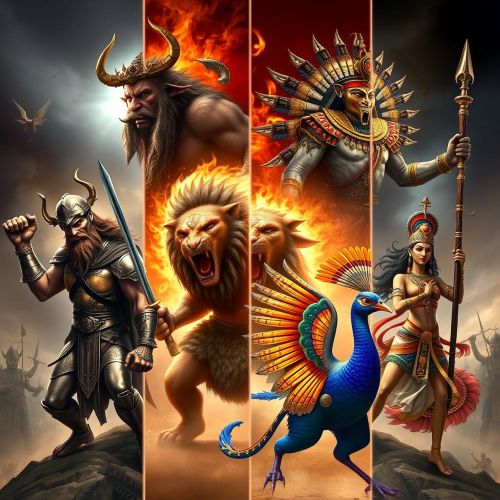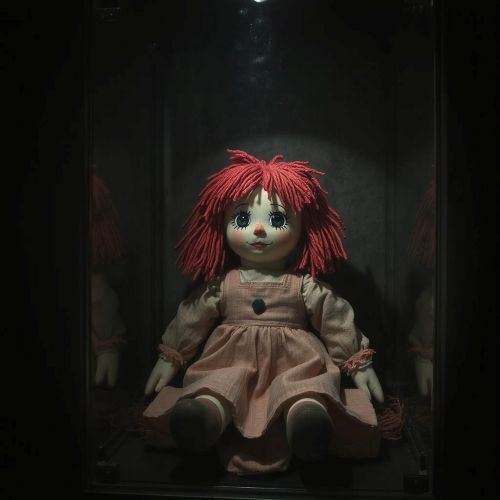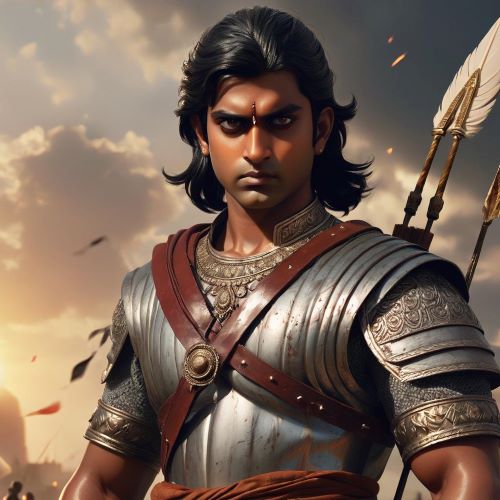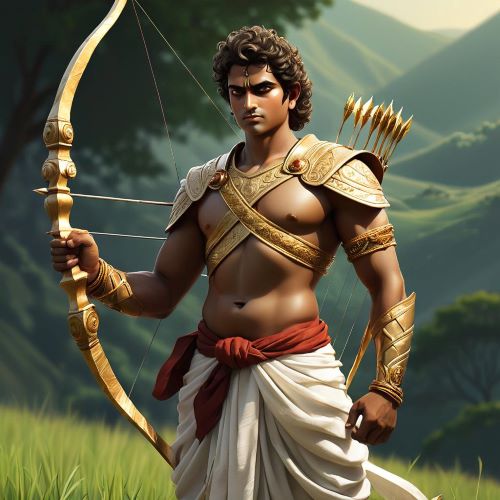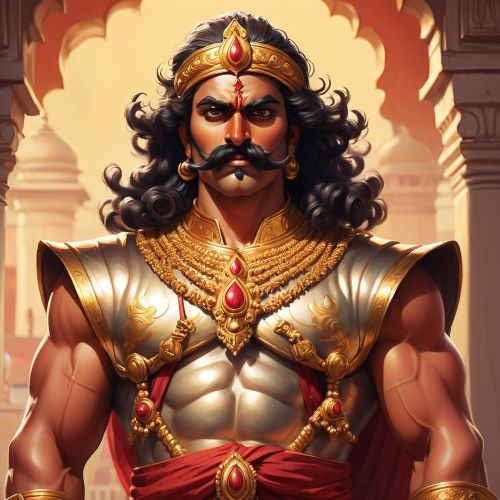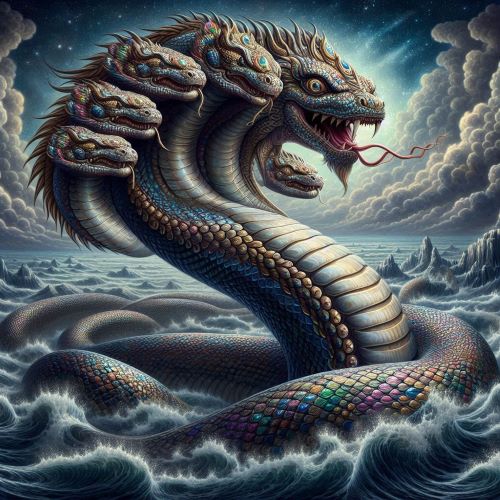Krishna : The Supreme Demigod
Listen
At a glance
| Origin | Indian Mythology |
| Classification | Demigods |
| Family Members | Devaki (Mother), Vasudeva (Father), Balarama (Brother), Subhadra (Sister) |
| Region | India |
| Associated With | Wisdom, Advice, Bhagavad Gita |
About Lord Krishna
Introduction
Krishna is a major deity in Hindu mythology. He is worshipped as the 8th avatar of Vishnu and is considered to be a supreme God in His own right. He is known for being a god of protection, compassion, and tenderness and his birthday is celebrated once a year by Hindus on the occasion of Krishna Janmashtami.
Krishna’s life is typically described as a series of anecdotes and narratives. Various Hindu texts have depicted him in various ways, such as as as a god-child, prankster, lover, strategist and divine hero. His iconography shows him in various stages of his life, from infancy to his late 20s. He is a central character in the Mahabharata, the Bhagavata Purana, the Brahma Vaivarta Purana and the Bhagavad Gita, and is mentioned in many Hindu philosophical, theological, and mythological texts.
Physical Traits
Although he is often depicted with various features, such as a black or dark skin, his iconography is typically focused on the natural colour of the material that he is formed from. In ancient and medieval art, his skin is referred to as the colour of Jambul.
Krishna is usually depicted wearing a feather-like wreath or crown, and playing a bansuri or flute. In this form, he is shown standing with his legs bent in front of the other. He is also depicted as a romantic boy who enjoys playing pranks on the people of his village and making music.
He is often depicted as a charioteer in epic scenes of the Mahabharata and in one of the most popular depictions, he is shown as giving wise counsel to Arjuna while he is driving a chariot. Various alternate icons of Krishna show him being a baby, a toddler, a dancing child, or a cosmic infant. Regional variations in his imagery are also seen in various parts of India.
Family
According to legend, Devaki and Vasudeva of the Yadava clan in Mathura are married. At the wedding, Kamsa, who is the tyrant brother of Devaki, arranges to kill all of the children of Devaki as a prophecy has foretold that Krishna will kill him. When Krishna is born, his father secretly carries him away from the palace and exchanges him with the child of Nanda and Yashodha. Legend has it that the baby who was brought back by Vasudeva, appears to be the Hindu goddess Yogmaya, informing Kamsa that his death has arrived. Krishna also had 2 siblings who survived, Balarama and Subhadra and is also cousins with the Pandavas who are the main protagonists of the Mahabharata
Other Names
Krishna is also known by various names, which reflect his various attributes and associations. Some of the most common names include Mohan, Govinda, Gopala and he is also referred to as Jagannatha, Kannan, Parthasarathy and Kanhaiyya in various parts of India.
Powers and Abilities
As one of the incarnations of Vishnu, Krishna showcases almost all the powers and abilities of the supreme being. Krishna is capable of everything within the earth and has displayed his ultimate powers in various situations in the religious texts.
Modern Day Influence
The birth of Krishna is celebrated as Krishna Jayanthi all around India. He is also a prominent figure in Buddhism, Jainism, Bahaa religion and in mythologies of many South East Asian countries.
Followers of Krishna are known as Vaishnavites and many temples have been built in his honour. The international movement known as Hare Krisna or ISKON (International Society for Krishna Consciousness) considers Krishna to be the ultimate God and spreads his teachings around the world.
Related Images
Frequently Asked Questions
What is Krishna a lord of?
Lord Krishna plays a central role in Hindu mythology and philosophy. He is often associated with concepts of divine love (bhakti), righteousness (dharma), and the pursuit of spiritual knowledge. His teachings are found in the Bhagavad Gita, a sacred text within the Mahabharata epic.
In which caste Lord Krishna was born?
In Hindu mythology and scripture, Lord Krishna is often described as being born into the Yadava or Yadu dynasty. The Yadavas were traditionally considered a Vedic Kshatriya (warrior) caste in the Indian social hierarchy. Krishna’s parents, Vasudeva and Devaki, were members of this dynasty.
Who is Lord Krishna?
Lord Krishna is a revered deity in Hinduism. He is considered the eighth incarnation (avatar) of Lord Vishnu, one of the principal deities in Hinduism. Krishna is known for his multifaceted nature, including his role as a divine teacher, warrior, and lover.
How is Lord Krishna typically depicted in art and sculpture?
Lord Krishna is often depicted as a young, dark-skinned man playing a flute. He is sometimes shown with a peacock feather in his hair, wearing traditional Indian attire. Various forms of Krishna, such as infant Krishna (Bal Krishna) and Krishna as a charioteer (Arjuna’s charioteer), are also popular in art.
Are there specific festivals associated with Lord Krishna?
Yes, several festivals celebrate Lord Krishna, with Janmashtami being the most significant. Janmashtami marks the birth of Lord Krishna and is celebrated with fasting, singing, dancing, and reenactments of his childhood antics. Other festivals include Holi, which is associated with Krishna’s playful use of colored powders.

